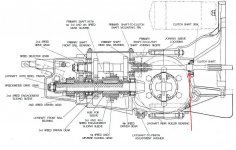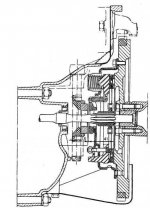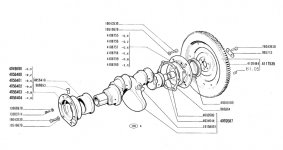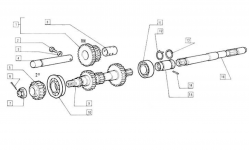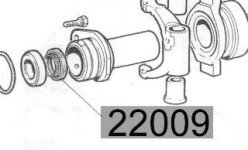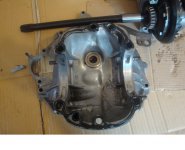The engine drop:
Disconnect +wire from battery
Disconnect fuel line from tank
0.Remove the two panels, 7 screws(under car) and 2 screws
1.Remove choke cable
2.Remove throttle cable(2 points)
3.Disconnect the dynamo(2 wires)
4.Disconnect licence plate light wire
5.Disconnect fuel line
6.Remove distributor cap and low tension wires
7.Disconnect spark plug wires
8.Disconnect oil pressure sensor
9.Remove the air tubes
Take the weigh fo the engine on a trolley jack under the sump.
10.Remove the two bolts and the two nuts. Lift away the mounting bracket
11.Remove the four nuts on the rear panel and put it in a safe place
On starter motor take out the split pin from pin holding the cable and undo the electric cable from terminal (13mm)
12.Undo three bolts and lift starter out
13.Undo the four nuts holding the engine to transmission(two on top first)
Now the engine is free, pull out carefully.
Hope this helps!
Jake


